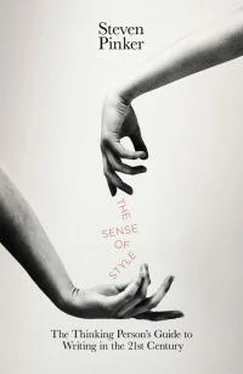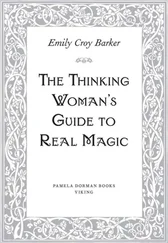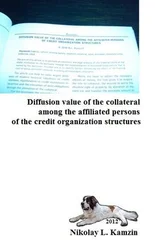When a sentence gets complicated, though, even a literate writer can lose track of how each branch in a coordination harmonizes with the rest of the tree. The writer of the slogan We get the job done, not make excuses presumably did not anticipate how customers would wince at the bad coordination. While the phrase get the job done is a present-tense predicate that goes with the subject we, the phrase not make excuses is non-tensed and can’t go with the subject on its own ( We not make excuses ); it can only be a complement of an auxiliary verb like do or will. To repair the slogan, one could coordinate two complete clauses ( We get the job done; we don’t make excuses ), or one could coordinate two complements of a single verb ( We will get the job done, not make excuses ).
A more subtle kind of off-kilter coordination creeps into writing so often that it is a regular source of mea culpas in newspaper columns in which an editor apologizes to readers for the mistakes that slipped into the paper the week before. Here are a few caught by the New York Times editor Philip Corbett for his “After Deadline” feature, together with repaired versions on the right (I’ve underlined and bracketed the words that were originally miscoordinated): 12
He said that surgeries and therapy had helped him
not only
[to recover from his fall],
but
[had
also
freed him of the debilitating back pain].
He said that surgeries and therapy had
not only
[helped him to recover from his fall],
but also
[freed him of the debilitating back pain].
With Mr. Ruto’s appearance before the court, a process began that could influence
not only
[the future of Kenya]
but also
[of the much-criticized tribunal].
With Mr. Ruto’s appearance before the court, a process began that could influence the future
not only
[of Kenya]
but also
[of the much-criticized tribunal].
Ms. Popova, who died at 91 on July 8 in Moscow, was inspired
both
[by patriotism]
and
[a desire for revenge].
Ms. Popova was inspired by
both
[patriotism]
and
[a desire for revenge].
Or
Ms. Popova was inspired
both
[by patriotism]
and
[by a desire for revenge].
In these examples, the coordinates come in matched pairs, with a quantifier ( both, either, neither, not only ) marking the first coordinate, and a coordinator ( and, or, nor, but also ) marking the second. The markers, underlined in the examples, pair off this way:
not only … but also …
both … and …
either … or …
neither … nor …
These coordinations are graceful only when the phrases coming after each marker—the ones enclosed in brackets above—are parallel. Because quantifiers like both and either have a disconcerting habit of floating around the sentence, the phrases that come after them may end up nonparallel, and that grates on the ear. In the sentence about surgeries, for example, we have to recover in the first coordinate (an infinitive) clashing with freed him in the second (a participle). The easiest way to repair an unbalanced coordination is to zero in on the second coordinate and then force the first coordinate to match it by sliding its quantifier into a more suitable spot. In this case, we want the first coordinate to be headed by a participle, so that it matches freed him in the second. The solution is to pull not only two slots leftward, giving us the pleasing symmetry between helped him and freed him. (Since the first had presides over the entire coordination, the second one is now unnecessary.) In the next example, we have a direct object in the first coordinate ( the future of Kenya ) jangling with an oblique object ( of the tribunal ) in the second; by pushing not only rightward, we get the neatly twinned phrases of Kenya and of the tribunal. The final example, also marred by mismatched objects ( by patriotism and a desire for revenge ), can be repaired in either of two ways: by nudging the both rightward (yielding patriotism and a desire for revenge ), or by supplying the second coordinate with a by to match the first one ( by patriotism and by a desire for revenge ).
Yet another hazard of tree-blindness is the assignment of case. Case refers to the adornment of a noun phrase with a marker that advertises its typical grammatical function, such as nominative case for subjects, genitive case for determiners (the function mistakenly called “possessor” in traditional grammars), and accusative case for objects, objects of prepositions, and everything else. In English, case applies mainly to pronouns. When Cookie Monster says Me want cookie and Tarzan says Me Tarzan, you Jane , they are using an accusative pronoun for a subject; everyone else uses the nominative pronoun I. The other nominative pronouns are he, she, we, they, and who; the other accusative pronouns are him, her, us, them, and whom. Genitive case is marked on pronouns ( my, your, his, her, our, their, whose, its ) and also on other noun phrases, thanks to the suffix spelled ’s.
Other than Cookie Monster and Tarzan, most of us effortlessly choose the right case whenever a pronoun is found in its usual place in the tree, next to the governing verb or preposition. But when the pronoun is buried inside a coordination phrase, writers are apt to lose sight of the governor and give the pronoun a different case. Thus in casual speech it’s common for people to say Me and Julio were down by the schoolyard; the me is separated from the verb were by the other words in the coordination ( and Julio ), and many of us barely hear the clash. Moms and English teachers hear it, though, and they have drilled children to avoid it in favor of Julio and I were down by the schoolyard. Unfortunately, that leads to the opposite kind of error. With coordination, it’s so hard to think in trees that the rationale for the correction never sinks in, and people internalize a string-based rule, “When you want to sound correct, say So-and-so and I rather than Me and so-and-so .” That leads to an error called a hypercorrection, in which people use a nominative pronoun in an accusative coordination:
Give Al Gore and I a chance to bring America back.
My mother was once engaged to Leonard Cohen, which makes my siblings and I occasionally indulge in what-if thinking.
For three years, Ellis thought of Jones Point as the ideal spot for he and his companion Sampson, a 9-year-old golden retriever, to fish and play.
Barb decides to plan a second wedding ceremony for she and her husband on Mommies tonight at 8:30 on Channels 7 and 10.
Presumably Bill Clinton, who uttered the first sentence while running for president in 1992, would never have said Give I a chance, because a noun phrase next to a transitive verb is obviously accusative:
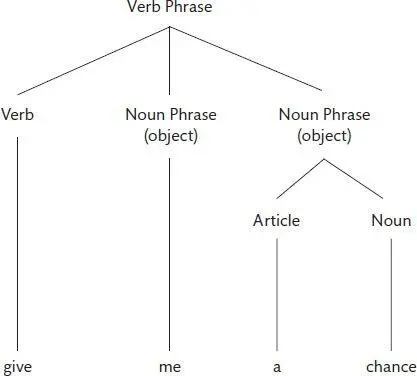
But the words Al Gore and separated give from me in the string, and the distance between them befuddled his case-selection circuitry:
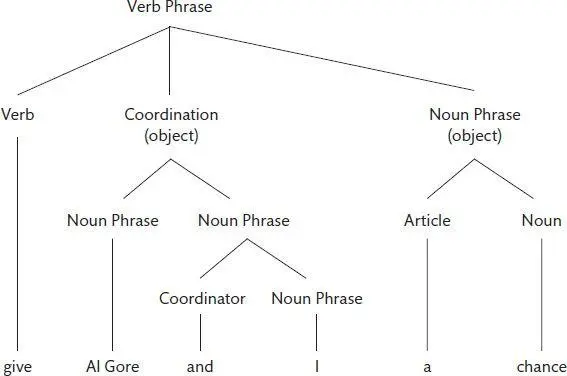
To be fair to the forty-second president, who is by all accounts a linguistically sophisticated speaker (as when he famously testified, “It depends on what the meaning of is is”), it’s debatable whether he really made an error here. When enough careful writers and speakers fail to do something that a pencil-and-paper analysis of syntax says they should, it may mean that it’s the pencil-and-paper analysis that is wrong, not the speakers and writers. In chapter 6 we’ll return to this issue when we analyze the despised between you and I , a more common example of the alleged error seen in give Al Gore and I. But for now, let’s assume that the paper-and-pencil analysis is correct. It’s the policy enforced by every editor and composition instructor, and you should understand what it takes to please them.
Читать дальше
